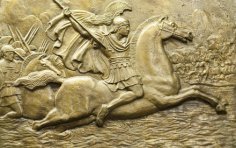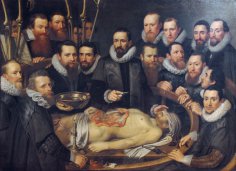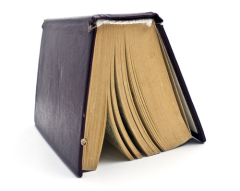
All spheres of society are interconnected. Military affairs are no exception. The art of warfare itself is only the tip of the iceberg. The evolution of military art depends not only on the insights of brilliant commanders, it occurs in parallel with changes in the social structure and public consciousness.
Until society is ripe for the corresponding changes, even a great commander is limited by the framework of his time. Either the development of military art will spur the evolution of the economy and state structure, or the brilliant commander will remain only a theorist.
Radical changes in military affairs in Europe occurred in the period from the middle of the 16th to the second half of the 17th century. Of course, the time limits are conditional. In different countries, changes took place differently; several stages can be distinguished in the process of evolution. The subjective factor is strong in military affairs: not everything is decided by the “progressiveness” of the organization of the army. And progress takes time; it is not immediately possible to truly realize all the new possibilities. In addition, a good commander can be a better practitioner than a theorist, winning battles despite the theories he himself professes.
The decisive factors that spurred the change process were:
1. The growing importance of firearms (first artillery, then hand weapons).
2. The transition from building an army in one large “square” to a thin and elongated linear formation.
3. Increase in the number of armies.
The evolution of firearms increased their effectiveness. The increase in the number of guns and shooters turned out to be progressive. And the one who was the first to depart from the previous battle order, using more rational tactics in the new conditions, would be able to take advantage of the updated weapons. It was necessary to increase the number of shooters, making them the main type of troops, and to use the maximum number of shooters simultaneously. These tasks were solved by the linear battle order.
If the main weapon is a pike (like the Swiss and Landsknechts), the optimal formation is something like a phalanx: a dense formation, where the rear ranks support the front ones, creating an offensive force. If the front rank dies, the one behind him takes his place. Several front ranks participate in the battle at the same time. This approach justified itself for a long time. But a large mass of soldiers is not maneuverable and not very controllable, especially in the absence of maneuvering skills. And where would they come from if the soldiers were almost never trained to maneuver together? For the era of mercenary armies, training and drill were not at all typical, and not needed, since the soldiers coped with their tasks without them.
The Spaniards were probably the first to divide a large “square” into tercios (regiments of 2-3 thousand men). Maneuverability in battle increased. The main force remained pikemen. The tercio was deep enough for an attacking onslaught with pikes and swords (with shields). However, the proportion of shooters in the middle of the 16th century could reach a third. At this time, artillery preparation was used for the first time (1512, the Battle of Ravenna). The shooters developed the caracole maneuver: the first rank fires a volley, splits and goes in both directions, again lining up behind the last rank to load. Or vice versa: the second rank moves out from behind the flanks of the first to fire. In addition to increasing the density and continuity of fire, this required training in joint actions, which increased discipline. However, not very much, since in the tension of battle the back ranks often fired into the air. But this was a significant step forward.
The development of the principles laid down in this way was connected with the transition to permanent armies. This change took place at the end of the 17th century in Holland. In the era of mercenary armies, the ruler hired a ready-made army, which had previously been staffed by a condottiere (contractor). Condottieres preferred to hire already trained fighters with weapons and equipment (the evolution of the system of equipment and supply of the army is a separate topic, we will talk about it later). Such units were not distinguished by special discipline, as well as loyalty. Hired for the time of war, they presented a serious problem in peacetime, often turning into gangs of robbers. Robberies were not just a habitual thing, but a normal thing. With a lack of supplies and payments, the army began to “provide” for itself. Discipline in such an army directly depended on the timeliness of payment – and it, in turn, on the financial state of the state. Not a single uniform or drill training was known then – these aspects of military affairs were forgotten. There was no systematic training or education.
The first permanent units appeared in the 15th century. But the real revolution was made by Maurice of Orange (1567-1625), a ruler, commander and military reformer. It was under him that soldiers began to be not only hired, but also trained. The impetus was the acquaintance with the ancient military art. Discipline was recognized as the basis of Roman victories. It is discipline that provides coherence of actions, which ensures both speed of movement on the march and maneuverability on the battlefield. And the army began to be trained, whereas before, outside the battlefield, soldiers were left to their own devices. Systematic exercises were revived: drill training, mastering rifle techniques, maneuvering. Drill training at that time was directly related to the conduct of battle. The troops of Prince Maurice of Orange learned to line up quickly and significantly surpassed their main opponents, the Spaniards, in this. And the ability to quickly line up in battle order could decide the fate of the battle.
But it is irrational to disband an army in peacetime, in the training of which so much effort was invested, capable of implementing complex “ancient” tactics. It is unknown whether it will be possible to gather trained mercenaries again when they are needed. Moreover, the disbanded army could be re-recruited in full! And Holland acquired a standing army.
This difficult step affected both the economy and the art of war itself. In order to make the mercenary army permanent, Maurice of Orange first of all ensured timely, day-by-day, payment of wages. This freed the soldier from the need to feed on plunder. This innovation required constant and significant expenses. On the other hand, the population now ceased to be afraid of soldiers, willingly accommodated them and supplied them with food.
A well-fed, friendly and well-funded army contributed to trade and economic development. Contemporaries noted that townspeople welcomed the placement of garrisons in cities and willingly let soldiers stay, which was not very typical for the era of mercenary armies.
The expensive army had to be used as efficiently as possible. The changing realities of war (improvement of firearms, increasing importance of artillery) required more coordinated actions in battle. In essence, the 16th-17th centuries saw a revival of the military art of antiquity.
Maurice of Orange divided the army into still smaller tactical units (1000–1200 men). This required much better discipline of soldiers (no longer united in a large, dense formation) and commanders (at the same time subject to general discipline and capable of a certain tactical initiative).
The division into regiments, half-regiments and companies, the formation of several lines in a checkerboard pattern was borrowed from the ancient Romans. This was a step forward compared to the formation of one large mass, significantly increasing maneuverability. The number of ranks was reduced to 10 and even 6. This made the line of troops thinner, partly reducing the pressure and striking power of the pikemen's mass, which was compensated by increased maneuverability and an increase in the number of shooters. The “manipular” order allowed the detachments to support each other, to close the gaps between the detachments with the next line where it was necessary during the battle. Only the first ranks of pikemen could actually fight, the reduction in the number of ranks allowed a greater number of warriors to directly participate in the battle. Improvements in firearms increased their effectiveness, and musketeers protected the pikemen from attacks by cavalrymen-reiters (mounted shooters). In the center were pikemen, on the flanks of the “maniples” were musketeers, who could, if necessary, take cover behind the pikemen. The number of musketeers was from a third to half of the army.
Such a battle formation requires much more discipline than a square formation of fifty ranks, where cohesion is achieved by the mass itself. In a relatively thin formation of ten ranks, a soldier maintains confidence in himself, his comrades and commanders.
The most important evidence of increased discipline is the participation of soldiers in fortification work! Mercenaries (and especially knights) did not engage in field work. The soldiers of Maurice of Orange carried out fortification work, which dramatically increased the effectiveness of actions against fortresses. In essence, this spoke of a genuine revival of ancient military art and promised rich prospects for the further development of military affairs.
The officer corps changed significantly. Idleness in peacetime came to an end, and now everyday life was filled with drill. The training of soldiers was carried out by commanders (including junior, non-commissioned officers), whose number increased to 28 per company of 100 people. The costs of their salaries increased significantly, but these expenses were not in vain. In fact, this was the price for the discipline and training of the army.
Officers had to learn too! Firstly, they were now responsible for training soldiers – and not only in the line. The war in the Netherlands was often accompanied by sieges. In addition to knowledge of revived ancient tactics and methods of training troops (which required, among other things, knowledge of Latin), officers had to become familiar with fortifications, both for defense and for taking fortresses. And increased tactical independence required commanders to have greater skills. Naturally, a semblance of an educational qualification arose. In classical mercenary armies, a commander could be of any origin. In the new army, the prestige of the officer's profession increased, which attracted representatives of the ruling classes to serve.
These ideas were further embodied and developed in the army of the Swedish king Gustav II Adolf (1594–1632). His army, although it consisted largely of foreign mercenaries, was more nationally homogeneous due to the introduction of recruitment. The officer corps became national and noble for the first time. Recruitment, supplemented by recruitment, made it possible to staff the army much more cheaply than a purely mercenary army.
Gustav Adolf tightened discipline. In particular, it was he who invented the punishment of the gauntlet. But the necessary level of discipline had been achieved. The Swedish army was able to move in an organized formation on the march, which obviously increased the speed of movement. In battle, Gustav Adolf could use an even thinner formation of 3-6 ranks. The number of pikemen was reduced to one third (they gradually disappeared altogether), now the emphasis was on firepower. Light artillery was created. A regiment (1,200 men) was given two cannons. Muskets were lightened (it became possible to shoot without a support) and regimental and battalion guns became maneuverable, moved in battle by one or two horses or without horses, by the soldiers themselves. Now the guns could be delivered in a timely manner to where they were needed, providing constant fire support. For light guns (not intended for firing cannonballs), a “cartridge” was developed from a powder charge and grapeshot.
The production of cast iron cannons began – somewhat heavier, but capable of firing cannonballs, which were much cheaper than the copper ones that were common at the time. This allowed for a significant increase in the number of cannons and, accordingly, firepower. In turn, the thin formation of infantry allowed for the front to be stretched out, giving more soldiers the opportunity to fire simultaneously. The density of fire increased. It was Gustav II Adolf who created a full-fledged linear battle order, which generally survived until the 19th century.
Gustav Adolf paid great attention to the interaction of the branches of the armed forces: infantry, cavalry and artillery. The introduction of mobile battalion guns was mentioned above, the cavalry was also distributed interspersed with the infantry.
Cavalry tactics also changed. As early as the mid-16th century, the classic knightly cavalry was being replaced by reiters – mounted archers armed with pistols. Having adopted the caracole, the cavalry almost abandoned close combat. As a result, the infantry also preferred the gun to the pike. Gustav Adolf demanded that the cavalry attack with blades, but this was no longer the former knightly cavalry, where everyone fought on their own. By that time, the cavalry had become relatively disciplined and had learned the joint actions required by the caracole. Accordingly, the effectiveness of the actions of a united and controlled mass of cavalry also increased. Gustav Adolf was also in no hurry to completely abandon fire contact. The first ranks of cavalrymen fired before striking with broadswords and the formation of horses themselves. And since the number of pikemen had decreased, the musketeers were vulnerable in close combat.
And of course, changes in military affairs stimulated industry and the economy. Improvement of weapons required new technologies. Production of metal and weapons grew, becoming a powerful source of income. Maintaining a standing army required changes in the tax system. Education reforms were also carried out. The most serious innovation was recruitment, which radically changed the principle of staffing troops and laid the foundation for the creation of national armies.





